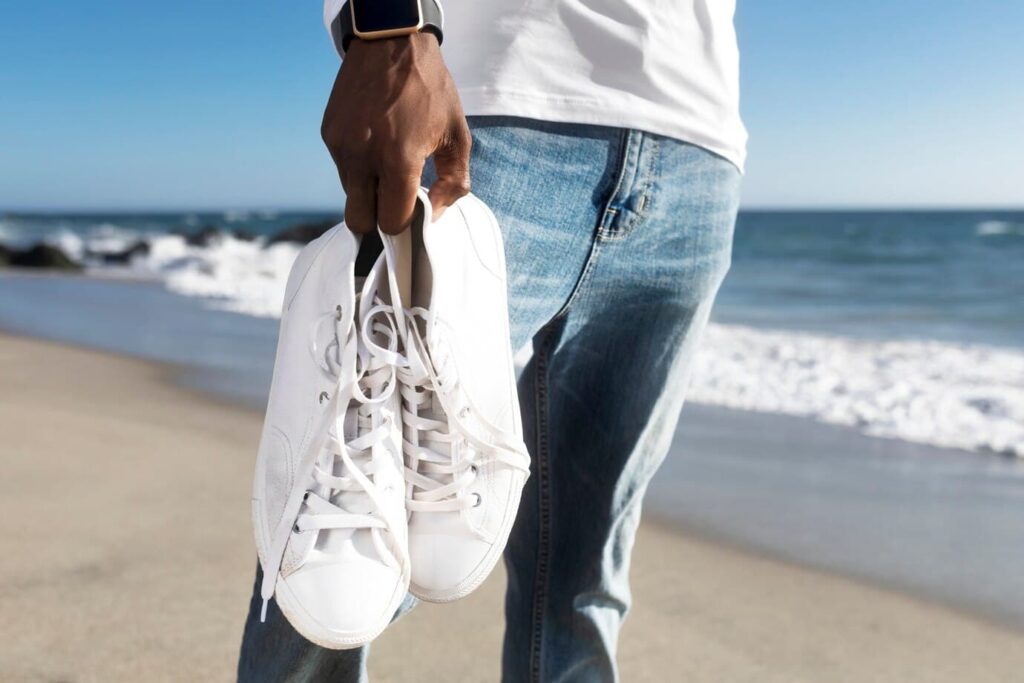A proper summer shoe does more than just match your outfit—it saves your feet. When the heat rises and sidewalks start to shimmer, heavy shoes turn every step into a chore. Sweaty feet aren’t just uncomfortable; they can lead to blisters, odor, and even skin issues. That’s why breathable shoes aren’t just a summer luxury—they’re a necessity.
But breathability is more than a mesh upper or a few perforations. It’s a design philosophy that considers airflow, materials, and how your foot moves with every step. So instead of listing the same over-marketed sneakers, let’s talk about what really matters when it comes to comfort in the heat—and spotlight a few less-obvious options that deserve space in your warm-weather lineup.
What Makes a Shoe Truly Breathable?
Not all summer shoes are created equal. Many brands slap “lightweight” or “summer edition” on models that are, in reality, no different from their fall versions. Breathability starts with materials—but that’s only one part of the puzzle.
The best breathable shoes for summer walks combine the following:
- Natural airflow: Open designs or mesh panels that actually circulate air rather than just trap heat.
- Moisture management: Linings or insoles that wick sweat rather than soak it.
- Flexibility: Shoes that move with your foot allow heat to escape more easily.
- Low weight: Heavy soles and thick padding can insulate your foot like a winter coat.
And here’s something most people forget: socks. A breathable shoe is only as good as the socks you pair it with. In high summer, thinner cotton-blend or bamboo socks can make a noticeable difference.
Underrated Styles That Let Your Feet Breathe
When people think “summer shoes,” they usually jump to flip-flops or canvas sneakers. But there’s a whole world of alternatives out there—shoes that are designed with breathability in mind but don’t get the attention they deserve. Here’s a short list of breathable styles that excel on warm-weather walks:
- Knit sneakers – These shoes offer a sock-like fit and excellent airflow. Brands like Allbirds and Tropicfeel specialize in models that combine performance with comfort.
- Leather fisherman sandals – Surprisingly breezy thanks to their open design, but still supportive and durable enough for real walking.
- Perforated slip-ons – Think of brands like Native Shoes or Rothy’s. Lightweight, stylish, and ideal for quick city strolls.
- Minimalist trail shoes – Brands like Merrell and Vivobarefoot create shoes with thin, ventilated uppers meant for movement and breathability.
- Espadrilles with textile uppers – Traditional in design, but modern versions often include a supportive sole and sweat-wicking interior.
Why Breathability Doesn’t Mean Flimsy

One common misconception is that breathable shoes can’t be durable. While some ultra-light models won’t last forever, there are plenty of well-built summer shoes that allow your feet to breathe without falling apart after two months of use.
The key is construction. A shoe can have an airy upper and still maintain a solid sole, arch support, and heel structure. For instance, many trail-ready knit shoes include toe bumpers and firm heel counters without adding bulk. Meanwhile, hybrid casual-sport styles offer ventilation panels that are structurally integrated—so you get airflow without sacrificing integrity. It’s about smart design, not just cutting material to lose weight.
Comfort Isn’t a Bonus—It’s the Standard
The most breathable shoe in the world means nothing if it gives you blisters. That’s why comfort and breathability should always be evaluated together. Look for models with padded collars that don’t rub, arch support that matches your foot shape, and insoles that don’t slide when damp.
Don’t forget to test your summer shoes the way you’ll actually use them. Try walking for 20 minutes indoors or on a shaded path before you commit. Your foot will “tell you the truth” after a little heat and motion—and it’ll do it without needing words.
One Pair Might Not Be Enough
Summer isn’t one-size-fits-all. City walks, beach strolls, and countryside hikes all demand something slightly different. A shoe that’s perfect for hot pavement may not grip well on grass. Something lightweight for travel might not give you the cushioning you want on longer treks.
If you’re serious about comfort, consider rotating between two pairs throughout the season—especially if you walk daily or in varied conditions. That gives your shoes time to dry between uses and your feet a chance to experience different support patterns.
A breathable shoe isn’t just cooler—it’s smarter. It respects your pace, your comfort, and the reality that summer should be felt through the breeze, not trapped in your socks. So when the sun starts climbing, give your feet what they really need: a little air, a lot of comfort, and the freedom to keep going.